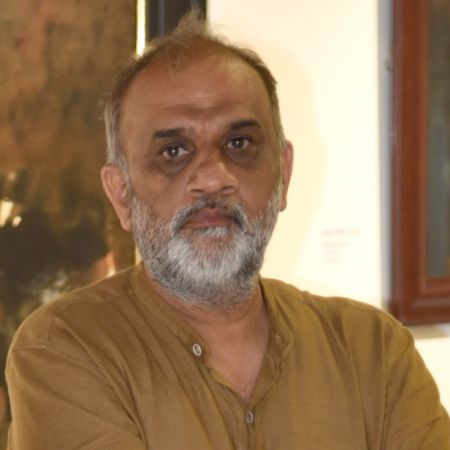Apurva Desai describes himself as ''an urban landscapist'. He probably refers to a series that he had done a few years ago, titled 'A Shipyard Symphony', based on his experience in the ship-breaking yards at Alang in Gujarat.
When working on such subjects close to reality, the artist cannot remain immune to it, and remain an outsider or a neutral observer, which is what adds depth to his work. He has been quoted as saying: Art to me is not an escape from reality, but is an integral expression of life in all its range and splendor. My art is of life, for life. I always feel life is much larger that art. The revolutionary ideas of creation always rage from my inner depths. These ideas form the basis of the transformation into living canvases. The artist has long been known to relate his art to the relative brimming of experience and memory.
The Baroda based artist, now in his mid-forties, studied painting at C. N. College of Fine Art, Ahmedabad and did Masters in Painting from M. S. University, Baroda. He has had several solo shows so far at major galleries in Kolkata, Ahmedabad and New Delhi. He has also featured in several group shows.
An essay by art critic Suneet Chopra, analyzing his work, notes: Desai's art, both in its execution and in its content, is among the most advanced examples of contemporary Indian art. It straddles the abstract and the figurative, the symbolic and the formal, the modernist and the post-modernist, in a powerful sweep of the brush. That he draws inspiration from the works of Van Gogh is evident, but he goes beyond it in his more structural paintings. He places that reality before the viewer in all its complexity, with its positive and negative features, but gives the hope that the future belongs to the positive aspect of development with the negative aspects being eliminated by concerted human action and the advance in consciousness related to it. His art is based on the hope that develops out of a first-hand experience of reality. This gives his art a special flavor.
Apurva Desai's show at Art Alive Gallery, New Delhi titled 'Rhythms'. The show comprises mostly figurative. The many portraits here incorporate a basic matrix of monumentality. They present a fictive three-dimensional pictorial space on a two-dimensional physical surface. An introductory note to the show elaborates: Defiant, mysterious and wildly eccentric, these works are a jumble of mismatched structures, set in a lush, rambling into doodles and squiggles hardly conforms to notions of artistic elegance. Yet for all of its flounced mystery, the works create a kaleidoscopic montage of urban impressions.
The artist is affected by socio-political developments around him, which reflect in his work. The theme of his work can either be pitiable condition of closed mills or the misery of unemployed laborers. The agony of coal miners will also find an echo in his works. He adds: 'This is why in my works you will see human bodies as well as portraits, actions as well as speed, postures as well as gestures, an urgency of the rhythms of everyday living. When the human being is a complete summation of hopes, aspirations, sorrows, dreams, joys and dynamism then there is so much happening that it must be portrayed as this confluence of so many shades and shadows of time.'







